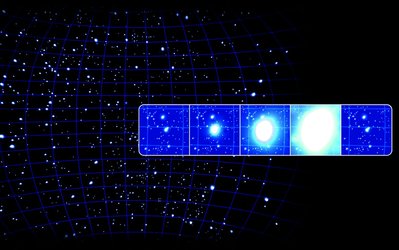Accept all cookies Accept only essential cookies See our Cookie Notice

About ESA
The European Space Agency (ESA) is Europe’s gateway to space. Its mission is to shape the development of Europe’s space capability and ensure that investment in space continues to deliver benefits to the citizens of Europe and the world.
Highlights
ESA - United space in Europe
This is ESA ESA facts Member States & Cooperating States Funding Director General Top management For Member State Delegations European vision European Space Policy ESA & EU Space Councils Responsibility & Sustainability Annual Report Calendar of meetings Corporate newsEstablishments & sites
ESA Headquarters ESA ESTEC ESA ESOC ESA ESRIN ESA EAC ESA ESAC Europe's Spaceport ESA ESEC ESA ECSAT Brussels Office Washington OfficeWorking with ESA
Business with ESA ESA Commercialisation Gateway Law at ESA Careers Cyber resilience at ESA IT at ESA Newsroom Partnerships Merchandising Licence Education Open Space Innovation Platform Integrity and Reporting Administrative Tribunal Health and SafetyMore about ESA
History ESA Historical Archives Exhibitions Publications Art & Culture ESA Merchandise Kids Diversity ESA Brand CentreLatest
Space in Member States
Find out more about space activities in our 23 Member States, and understand how ESA works together with their national agencies, institutions and organisations.
Science & Exploration
Exploring our Solar System and unlocking the secrets of the Universe
Go to topicAstronauts
Missions
Juice Euclid Webb Solar Orbiter BepiColombo Gaia ExoMars Cheops Exoplanet missions More missionsActivities
International Space Station Orion service module Gateway Concordia Caves & Pangaea BenefitsLatest
Space Safety
Protecting life and infrastructure on Earth and in orbit
Go to topicAsteroids
Asteroids and Planetary Defence Asteroid danger explained Flyeye telescope: asteroid detection Hera mission: asteroid deflection Near-Earth Object Coordination CentreSpace junk
About space debris Space debris by the numbers Space Environment Report In space refuelling, refurbishing and removingSafety from space
Clean Space ecodesign Zero Debris Technologies Space for Earth Supporting Sustainable DevelopmentLatest
Applications
Using space to benefit citizens and meet future challenges on Earth
Go to topicObserving the Earth
Observing the Earth Future EO Copernicus Meteorology Space for our climate Satellite missionsCommercialisation
ESA Commercialisation Gateway Open Space Innovation Platform Business Incubation ESA Space SolutionsLatest
Enabling & Support
Making space accessible and developing the technologies for the future
Go to topicBuilding missions
Space Engineering and Technology Test centre Laboratories Concurrent Design Facility Preparing for the future Shaping the Future Discovery and Preparation Advanced Concepts TeamSpace transportation
Space Transportation Ariane Vega Space Rider Future space transportation Boost! Europe's Spaceport Launches from Europe's Spaceport from 2012Latest
Integral - The Gamma Ray Burst
Gamma ray bursts pose one of the greatest mysteries of modern astronomy. About once per day, the sky above our heads lights up with a flash practically invisible to the naked eye but yet very spectacular: a burst of gamma rays. These are perhaps the most violent events in the universe but at present, we don't even know what causes them. This programme outlines how ESA's Integral gamma ray observatory will to be launched on 17 October 2002 will hunt for gamma rays. It includes recordings made at scientific institutes in Denmark and Switzerland. The programme comprises of an A-roll with split track and English commentary and is complemented by a B-Roll with clean international sound.
The video includes:
00:30 The Gamma Ray Bursts: Gamma ray bursts pose one of the greatest mysteries of modern astronomy. Animation and images of different flashes. Gammy ray burst are extremely distant and must be caused by tremendous explosions. Among the different possible hypnotises it could be caused by exceptional violent Hyper nova, or the merger of Neutron Stars or black holes . Very beautiful images.
01:45 Together with NASA’s gamma burst ray SWIFT spacecraft, to be launch in 2003, Integral will finally shed light on the gamma ray burst mystery .
01:54 Integral spacecraft illustration, of the instruments on Integral.
01:56 The Joint European X-Ray Monitor (JEM-X) is one of four instruments on ESA's INTEGRAL mission. It plays a crucial role in the detection and identification of the cosmic gamma-ray sources.
02:36 In Copenhagen at the Danish Space Research Institute, Niels Lund has been working on the JEM-X since the mid-nineties.
02:50 Niels Lund interview on why JEM-X is needed.
03:29 Explanation on how does JEM-X works.
03:43 Niels Lund continue explaining how JEM-X will work. He continues on some of the conditions in space for observation.
05:44 Some explanation on the loss of data.
05:55 The research centre for Integral is the Integral Scientific Data Centre (ISDC), Versoix, in Switzerland. The centre will be the interface between the Integral scientific data and the scientists and researchers worldwide.
06:30 Thierry Courvoisier, Head of Integral Science Data Centre, explains what will be observing by Integral.
07:30 Images of gamma ray bursts which could help understand the form and evolution of the universe.
07:58 Niels Lund explains why he is doing his work.
08:11 The end
-
CREDIT
ESA -
LICENCE
ESA Standard Licence
-
Documentary
-
-
-
-
-

Integral Index

Integral - Imaging The Gamma Ray Sky

Integral - A Short History of Gamma Ray Astonomy

Gamma-ray bursts















 Germany
Germany
 Austria
Austria
 Belgium
Belgium
 Denmark
Denmark
 Spain
Spain
 Estonia
Estonia
 Finland
Finland
 France
France
 Greece
Greece
 Hungary
Hungary
 Ireland
Ireland
 Italy
Italy
 Luxembourg
Luxembourg
 Norway
Norway
 The Netherlands
The Netherlands
 Poland
Poland
 Portugal
Portugal
 Czechia
Czechia
 Romania
Romania
 United Kingdom
United Kingdom
 Slovenia
Slovenia
 Sweden
Sweden
 Switzerland
Switzerland























